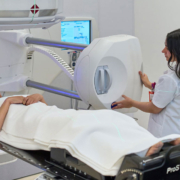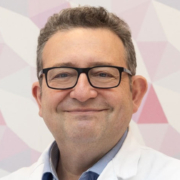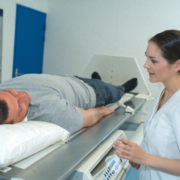This March marks the 21st anniversary of Brain Tumour Awareness Month, and every radiotherapy centre plays a part in ensuring that as many brain tumours are treated as possible, with advanced technology and diagnostics assisting with this aim.
Initially launched by a group of brain tumour charities that would later form Brain Tumour Research, Brain Tumour Awareness Month focuses on fundraising for the treatment and prevention of brain tumours, as well as supporting people who are undergoing treatment.
As well as this, one major goal of Brain Tumour Awareness month is to ensure that people are aware of major common signs and symptoms that could be caused by a brain tumour, so that people can book an MRI or CT scan as soon as possible.
The symptoms of a brain tumour can vary somewhat depending on the type of tumour, its grade, its position in the brain and which parts of the brain it is affecting.
Headaches
Whilst a symptom of several conditions, including tension, stress or fever, a headache which feels different from normal can be a symptom of a brain tumour, especially if they do not seem to go away.
Headaches are caused by raised intracranial pressure, where the tumour pushes against the skull. This can cause not only headaches that tend to be dull, constant and do not go away, but also nausea and eyesight changes such as double or blurred vision.
They are also often more noticeable in the morning, and if this is the case, then an appointment with a doctor should be booked so that tests can be arranged.
Sickness And Drowsiness
Similar to headaches, there are a range of conditions which have nausea, vomiting and drowsiness as potential causes, but as noted above, they can be a symptom of raised intracranial pressure.
If other common causes such as food poisoning, alcohol, dehydration, pregnancy or common conditions such as the flu can be ruled out, if the nausea does not show any signs of improvement even after vomiting, and is accompanied by headaches and vision changes, it could be a symptom of a brain tumour.
Many common brain tumour symptoms are accompanied by others and persist, which means that they should be examined if there is no sign of potential improvement.
Abnormal Vision Changes
Most people will experience some form of gradual vision change over their lives, but a sudden change in vision may need to be examined by an ophthalmologist in order to rule out other potential causes.
Brain tumours can increase pressure on the optic disc and optic nerve, both of which can cause blurred vision, double vision, sudden temporary loss of vision or a loss of peripheral vision, causing objects to suddenly appear.
Exactly how vision is affected will depend significantly on where a tumour is located, and it is important to explain these symptoms to a doctor, book an eye test or go to hospital if these symptoms are severe and sudden in appearance.
Personality Changes
Some symptoms are first noticed by close friends and family, such as changes in personality or behaviour.
These can vary from person to person but can include increased forgetfulness, irritability, anxiety, depression, mood swings or a loss of inhibitions.
This tends to be caused by brain tumours that affect the frontal lobe, which manages emotional regulation and understanding the emotions of other people.
As with headaches, not all changes in personality can be attributed to brain tumours, with stress, tension or personal life events all contributing to behavioural change. However, any sudden personality or behavioural changes should be examined.
It can be useful for the person or someone close to them to document any personality changes and how this differs from their usual behaviour.
Seizures
A common symptom of brain tumours is seizures or epilepsy, a common pattern of seizures. According to the Brain Tumour Charity, two-thirds of people diagnosed with a brain tumour will experience at least one seizure caused by their tumour.
Seizures themselves have varying symptoms, from uncontrollable jerking motions (often known as fits), stiffness, losing awareness, unusual sensations or collapsing. In some cases, the person is not aware that they are having a seizure.
Seizures and epilepsy will typically require a visit to a specialist, as epileptic fits can be potentially life-threatening depending on where they occur, and part of this process is determining any potential causes and treatment paths for stopping or reducing the severity of seizures.
Alongside radiotherapy, a specialist may prescribe anti-convulsant drugs to control the seizures as part of the overall treatment.











